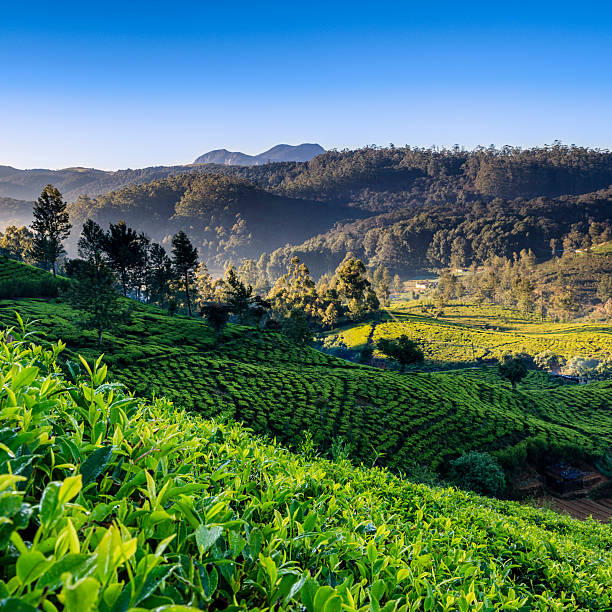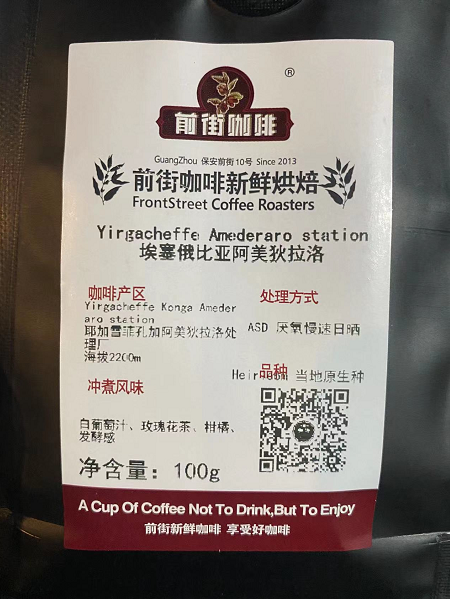Does Ceylon black tea come from Sri Lanka? What are the famous tea garden brands in Sri Lanka? The development of Ceylon tea garden is affected by fungal diseases.
Managers of Sri Lanka commercial tea plantations welcomed the government's decision to allow nitrogen imports, but said the rubber and spice industries had also been hit hard by the ban on agrochemicals. Commercial tea plantations have so far been using some fertilizer imported from China because of rising prices, but they warn that yields will fall sharply once the current rainy season ends. Roshan Rajadurai, representing farm managers at the Farmers Association, said: "We applaud the pragmatic decision taken by the government at the final stage, which provides a much-needed boost to tea producers who are dealing with many challenges, including rising production costs and continued disruptions caused by the epidemic." "Sustainable solutions in fertilizer will help the tea industry contribute to the economy and earn much-needed foreign exchange for the country." Sri Lanka banned fertilizer imports as the country's central bank printed money to keep interest rates low and pay civil servants, triggering a foreign exchange shortage. Officials from the Sri Lanka Government Medical Officers Association, an important policy advocacy association, also say agricultural chemicals are causing noncommunicable diseases. According to the Roman writer Pliny the Elder, ancient Sri Lanka people lived for 140 years without chemicals. Sri Lanka's government issues executive orders through gazettes aimed at saving foreign exchange and stopping the spread of non-communicable diseases, but analysts warn that the lack of evidence-based coercive policies will backfire. According to the Palestinian Authority, another export crop was severely affected following the ban on tea and rubber on 21 May. The PA said: "The solution for rubber fertilizer has not yet been announced, which also brings considerable foreign exchange earnings to the country." "The rubber industry in particular has been ravaged by an extremely serious fungal disease, Pestalotiopsis, which has reached epidemic proportions and destroyed coffee plantations in Sri Lanka in the late 19th century. "In addition to ensuring that the planting sector is able to maintain optimal plant nutrient levels, the industry is waiting for further clarity on the use of other important inputs to control weeds and pests."

Fungal diseases require fungicides and extra fertilizer to help trees regrow defoliation. Sri Lanka has plans to import organic fertilizer from China and other countries after warnings that municipal or other waste from countries with industrial production may contain heavy metals, other residues and pests. Sri Lanka tea is exported as a food product that meets global and national safety standards, particularly as some countries only allow classification of the safest phytonutrients, pesticides and herbicides according to known science. Based on known science, acceptable levels of chemical residues have been established by global and national health regulators. The tea industry says there is no evidence that phytonutrients used in tea cultivation are harmful to health and the environment, and the Tea Institute approves them after rigorous testing. "More than 95 percent of Sri Lanka tea exports are inspected by buyers who meet very high standards, including buyers in regions such as Europe," PA said. "These tests ensure that chemical residues, if any, are negligible and insignificant for human consumption, as failure to meet these standards can lead buyers to reject orders."
Important Notice :
前街咖啡 FrontStreet Coffee has moved to new addredd:
FrontStreet Coffee Address: 315,Donghua East Road,GuangZhou
Tel:020 38364473
- Prev

How many coffee producing areas are there? how about coffee beans from the Ethiopian Guoding Cooperative, the top ten coffee producing countries in the world? Is the Guoding Cooperative a coffee farm?
Yega Xuefei has always been one of the best producing areas in Ethiopia, the coffee produced has rich floral aroma and fruit flavor has always been the darling of coffee lovers, and the most representative coffee growing area is the Waka Cooperative. The Godding Cooperative, originally part of the Waka Cooperative, was in the 20th century.
- Next

What is the Ethiopian boutique coffee TOH double champion Amedilaro? Who is the double champion of TOH in 1920?
Almost every cafe has Ethiopian coffee, and Qianjie coffee beans are no exception. Every year, baristas and roasters on Qianjie Coffee do cup tests on coffee from different producing areas of Ethiopia, and one of the washed coffee beans called Amedilaro is particularly popular. It won the championship of TOH, in Jiuke.
Related
- Beginners will see the "Coffee pull flower" guide!
- What is the difference between ice blog purified milk and ordinary milk coffee?
- Why is the Philippines the largest producer of crops in Liberia?
- For coffee extraction, should the fine powder be retained?
- How does extracted espresso fill pressed powder? How much strength does it take to press the powder?
- How to make jasmine cold extract coffee? Is the jasmine + latte good?
- Will this little toy really make the coffee taste better? How does Lily Drip affect coffee extraction?
- Will the action of slapping the filter cup also affect coffee extraction?
- What's the difference between powder-to-water ratio and powder-to-liquid ratio?
- What is the Ethiopian local species? What does it have to do with Heirloom native species?

